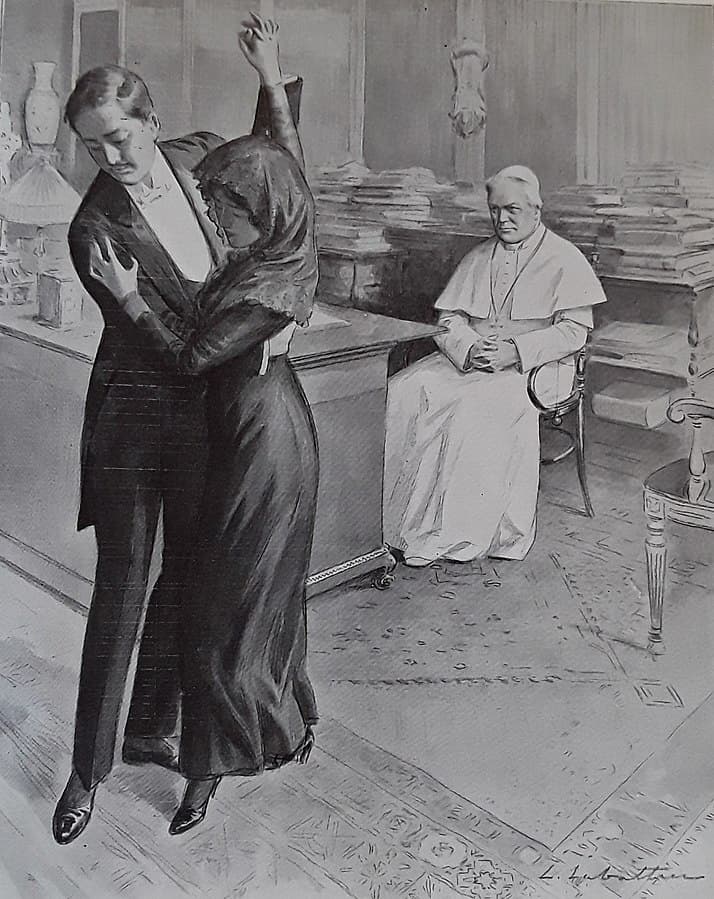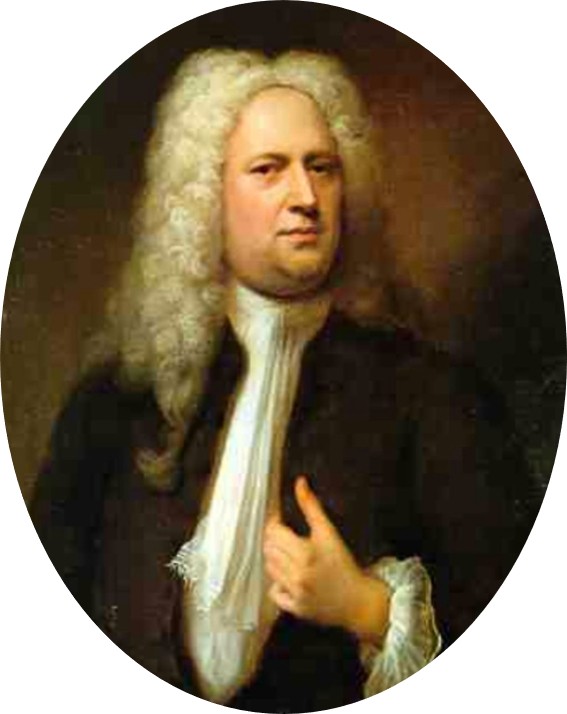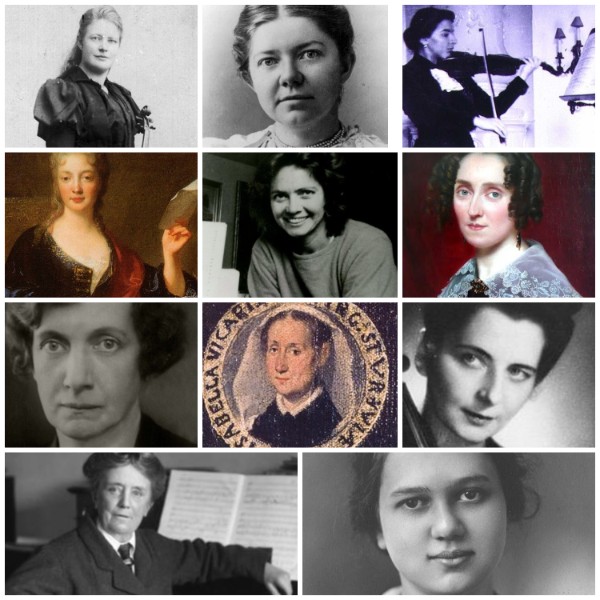In religious Italy in the early 20th century, the newly imported tango was judged to be just too salacious. In 1914, just on the cusp of WWI, Pope Pius X asked for a private demonstration of the new dance craze and found it to be barbaric.

Pope Pius X views the tango
He advised that instead of this foreign lascivious dance, all Italians (and right-thinking Catholics everywhere) should adopt a dance that had its last step at the end of the 18th century – the Furlana, a dance of Venice. The name, variously given as Furlana, Furlane, Forlane, Fiulana, or Forlana comes from Friuli, the region around Venice.

Pietro Longhi: Peasants dancing the Furlana, ca. 1750 (private collection)
It turns out that the Pope’s involvement was a lie created by the French press, and had been invented by Le Temps’ Italian correspondent, Jean Carrère, but after the story was picked up by Il Tempo newspaper in Rome, the news travelled the world anyway.
We can hear the pre-20th-century Furlana in the opera La Gioconda by Amilcare Ponchielli, written in 1876. It’s fast and jumping and doesn’t allow for any of that intimate contact the tango requires.
Amilcare Ponchielli: La Gioconda – Act I Scene 9: Carneval! Baccanal! (Milan La Scala Chorus; Milan La Scala Orchestra; Antonino Votto, cond.)
Overnight, composers and choreographers went into high-speed creation mode. The dance hadn’t been danced for at least 50 years or only existed in highly stylized opera-staged versions. What was the ‘real’ forlana? A Venetian dance teacher promoted his school by saying that he’s spoken with a Venetian octogenarian and found out the steps and a teacher in Rome said he’d found an old book that included Furlana choreography.
The sheet music for the Furlana often mentioned that the dance was recommended by the Pope.

Célèbre Furlana Venitienne © blog.imagesmusicales.be
Other music made visible reference to the dance’s Venetian origins – notice the papal references.

La Giocosa Furlana, 1914, and La Furlana, 1914 © blog.imagesmusicales.be
Few of these works were recorded, but we do find traces of the Furlana in many composers’ works. Ignoring the pre–20th-century works by Tartini, Vitali, Couperin, and even Bach, we can find examples starting even before Pope Pius’ dictum.
Three composers include Furlana dances in their works from the early 20th century, Pietro Mascagni included a Furlana in his 1901 opera Le maschere, but he was trying to evoke 18th-century styles.
Pietro Mascagni: Le Maschere – Furlana (Teatro Lirico Chorus; Teatro Lirico Orchestra; Tiziano Severini, cond.)
Another turn of the century work including a forlane was by Gustave Samazeuilh in his 1902 Piano Suite in G.
Gustave Samazeuilh: Piano Suite in G Minor – VI. Forlane (Olivier Chauzu, cond.)
Ottorino Respighi included one in his 1905 Suite, used for its folksy style.
Ottorino Respighi: Suite, P. 57 – No. 4. Furlana (Roberto Fabbriciani, flute; Abruzzese Symphony Orchestra; Nicola Paszkowski, cond.)
Maurice Ravel included one in his work in memory of Couperin in Le Tombeau de Couperin, written between 1914 and 1917, using it as an ancient dance.
Maurice Ravel: Le tombeau de Couperin – Forlane (François-Joël Thiollier, piano)
Tibor Harsányi included a Forlane in his 1924 collection of dances.
Tibor Harsányi: 12 petites pièces – No. 8. Forlane (Giorgio Koukl, piano)
Emil Nikolaus von Reznicek’s 1935 Karneval-Suite im alten Stil included a Furlana although in a more stately style than we hear in other composers’ versions.
Emil Nikolaus von Reznicek: Suite im alten Stil, “Karneval” – IV. Furlana (Weimar Staatskapelle; Stefan Solyom, cond.)
In Jarmil Burghauser’s 1957 ballet, Sluha dvou pánů (The Servant of Two Masters), there’s a Furlana.
Jarmil Burghauser: Sluha dvou pánů (The Servant of Two Masters) – IV. Furlana (Prague Symphony Orchestra; Zdeněk Košler, cond.)
French composer Germaine Tailleferre, the only female member of Le Six, wrote a forlana, which she spelled Forlane in 1972 as a work for flute and piano.
Germaine Tailleferre: Forlane (Ulrike Sieber, flute; Angela Gassenhuber, piano)
In pop culture, the Furlana craze lasted only a few months, from the spring until war broke out on 28 July 1914. In classical music, it still retained both its 18th-century and early–20th-century links.
For more of the best in classical music, sign up for our E-Newsletter



